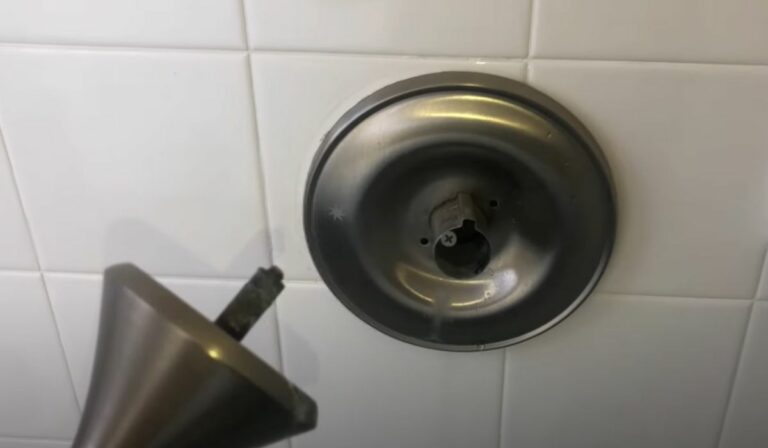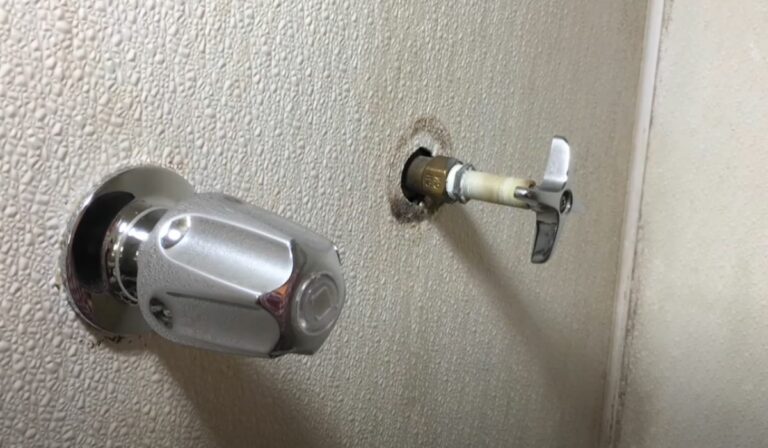How Wide Is a Shower Curtain
You’ll want a shower curtain about 70 to 72 inches wide for most standard bathtubs and showers to ensure full coverage without gaps or dragging. If you have a larger or walk-in shower, consider wider options up to 84-96 inches for proper water containment. Measure your shower width accurately, including the rod type, to pick the right size. Length also matters for splash protection. Keep going to find out how to choose and hang the perfect curtain for your space.
Standard Shower Curtain Widths
When you pick out a shower curtain, you’ll find that standard widths typically range between 70 and 72 inches. This size suits most shower stalls and bathtubs perfectly, offering enough coverage to prevent water from splashing out.
If your shower space is wider than average, you might need a curtain that’s wider than the standard to ensure proper coverage. Keep in mind, though, wider curtains can bunch up and look bulky when drawn.
If your shower is smaller or has a unique shape, you might find narrower options available. Always measure your shower or tub’s width before buying, so the curtain fits well without leaving gaps or dragging on the floor.
Choosing the right width helps keep your bathroom clean and dry.
Common Shower Curtain Lengths
Although shower curtain widths are important, you’ll also need to consider length to ensure proper coverage and prevent water from escaping.
The most common shower curtain length is 72 inches, which fits most standard bathtubs and showers. If you have a taller shower or want extra protection from splashes, you might opt for a 78-inch curtain.
For shorter spaces, a 70-inch length can work well, especially in compact bathrooms.
Keep in mind, the curtain should hang close to the tub’s edge or floor without dragging to avoid mold and mildew buildup.
Choosing the right length helps keep your bathroom dry and tidy.
Factors Influencing Shower Curtain Size
Since shower spaces vary widely, several factors influence the ideal shower curtain size for your bathroom. First, consider the width of your shower or tub; your curtain needs to be wide enough to fully cover the opening and prevent water from splashing out.
The type of shower rod also matters—curved rods require a wider curtain to accommodate the arc. Additionally, the curtain’s length depends on your tub’s depth and how much clearance you want between the curtain and the floor or tub edge.
Keep in mind the style and fabric of the curtain, as heavier materials may hang differently, affecting the fit. Lastly, if you want extra coverage for privacy or aesthetics, opting for a slightly wider curtain can enhance both function and look.
Measuring Your Shower Space
To get the perfect shower curtain size, start by measuring the width and height of your shower space. Use a tape measure to determine the distance from one wall to the other, ensuring you measure at the curtain rod’s height where the curtain will hang.
Next, measure from the rod down to the shower base or tub edge to find the curtain’s length. Remember to account for any hooks or rings that might add extra length.
Double-check your measurements to avoid mistakes. Precise width and height measurements help you select a curtain that fully covers the area without gaps or excessive bunching.
Taking these steps ensures your shower curtain fits well, keeps water inside, and complements your bathroom’s look.
Choosing the Right Width for Different Tub Types
How do you pick the right shower curtain width for your specific tub type? First, consider the standard bathtub, which typically measures around 60 inches long. A shower curtain about 72 inches wide works well here, providing enough fabric to overlap and prevent water splashes.
If you have an oversized or garden tub, you’ll want a wider curtain—usually 84 to 96 inches—to ensure full coverage.
For corner tubs, measure both walls and choose a curtain that fits the combined length plus extra for overlap. Remember, the curtain should extend beyond the tub edges to keep water in.
Shower Curtain Widths for Walk-In Showers
Walk-in showers often require wider shower curtains than standard tubs because they lack a fixed enclosure. You’ll want a curtain wide enough to cover the entire opening and prevent water from splashing out.
Typically, walk-in shower curtains range from 72 to 96 inches wide, depending on the shower’s dimensions. Measure the width of your shower space carefully, and add a few extra inches for overlap to ensure full coverage.
If your shower is extra wide, consider a curtain on the larger end of the spectrum or even two curtains that meet in the middle. Proper width not only keeps your bathroom dry but also maintains privacy.
Custom Shower Curtain Options
When standard shower curtains don’t fit your space perfectly, custom options offer a tailored solution. You can choose exact measurements to fit unique shower enclosures, ensuring full coverage without gaps.
Custom curtains also allow you to pick from various materials, patterns, and colors to match your bathroom’s style. Whether your shower is extra wide, narrow, or has an unusual shape, custom curtains provide flexibility that off-the-shelf options can’t.
Plus, you can add features like weighted hems or reinforced grommets for durability. Ordering a custom shower curtain might cost a bit more, but the perfect fit and personalized design make it worthwhile.
This way, you get a functional and aesthetically pleasing curtain suited precisely to your bathroom’s needs.
Tips for Hanging a Shower Curtain Properly
Although hanging a shower curtain might seem straightforward, doing it correctly ensures water stays inside the shower and your bathroom stays dry. First, measure the width of your shower or tub to pick the right curtain size—usually, a 72-inch width fits standard setups.
Install the rod securely at a height that allows the curtain to hang just inside the tub or shower base to prevent water escape. Use sturdy hooks or rings to hang the curtain evenly, avoiding gaps. Make sure the curtain overlaps the edges of the tub or shower enclosure.
Finally, check that the curtain moves smoothly for easy access and closes fully every time. Following these tips helps you avoid water messes and keeps your bathroom clean and dry.
Frequently Asked Questions
What Materials Are Best for Shower Curtains?
You’ll want waterproof materials like vinyl, PEVA, or polyester for shower curtains. They resist mold and mildew, dry quickly, and are easy to clean. Fabric liners add style but need a waterproof backing.
How Do I Clean and Maintain a Shower Curtain?
You can clean your shower curtain by tossing it in the washing machine with mild detergent and towels on a gentle cycle. Hang it to dry completely to prevent mold. Wipe regularly and replace if mildew returns.
Are There Eco-Friendly Shower Curtain Options?
Yes, you can find eco-friendly shower curtains made from materials like organic cotton, hemp, or recycled polyester. They’re biodegradable or recyclable, reducing plastic waste. You’ll help the environment while keeping your bathroom stylish and safe.
Can Shower Curtains Help Prevent Mold and Mildew?
Yes, you can prevent mold and mildew with shower curtains made of mildew-resistant materials. Make sure to keep them dry and clean regularly, and always allow proper ventilation in your bathroom to reduce moisture buildup.
What Styles and Patterns Are Popular for Shower Curtains?
You’ll find popular shower curtain styles include minimalist, geometric, floral, and nautical patterns. Bold colors, nature-inspired prints, and transparent or textured designs also trend, letting you personalize your bathroom’s vibe while keeping it fresh and stylish.
Conclusion
Now that you know the standard widths and lengths, you can easily pick the perfect shower curtain for your space. Remember to measure your shower or tub carefully and consider factors like style and functionality. Whether you have a walk-in shower or a classic tub, choosing the right width ensures better water coverage and a neat look. Don’t forget, custom options are available if you need something unique. Hang it properly, and you’re all set!


